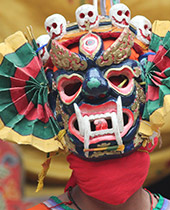A Tshechu is a Buddhist festival in honour of Guru Rimpoche, the saint who brought Buddhism to Bhutan. Tshechus are held on auspicious days and months in the Bhutanese calendar and can last up to four days. Entire communities, and a few fortunate travellers, come together to witness colourful mask dances and other forms of entertainment.
These are some of our favourite moments of the festival:
These are some of our favourite moments of the festival:
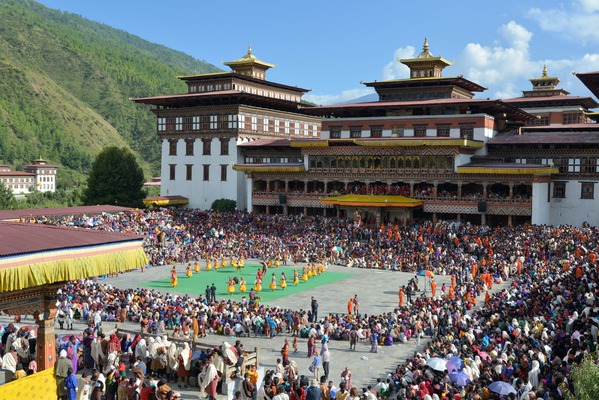
1. The Shawo Shachi, the “Dance of the Stag and the Hounds”. Demonstrating compassion and forgiveness, this dance is inspired by the legacy of an eleventh-century Tibetan yogi Jetsun Milarepa. It illustrates the encounter of the saint and a hunter Gonpo Dorje who was converted to Buddhism by the wise saint.
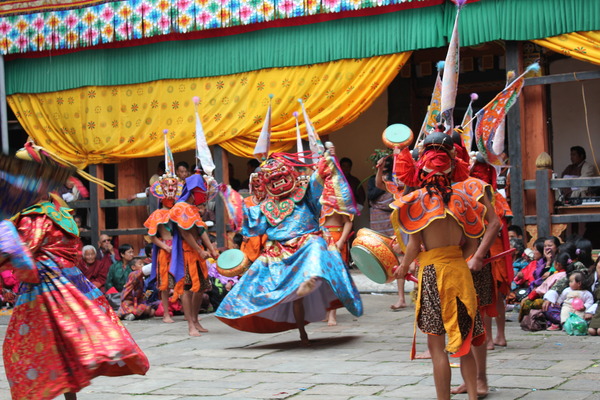
Photo credits: Arian Zwegers
2. The Durdag chham, the “Dance of the Lords of the Cemetery”, serves as a reminder of impermanence and is performed by four dancers wearing white skeletal costume and skull mask. These dancers march into the courtyard with thunderbolt steps to summon all negative forces. Dancers bend backward touching the ground by the tip of their masks as an act of summoning the deities of the earth to witness their act of faith.
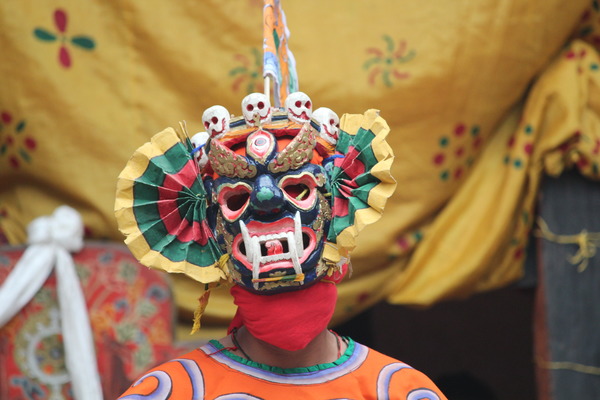
Photo Credits: Arian Zwegers
3. The Bardo Raksha Mangcham, the “Dance of Judgment of the Dead” is a representation of the judgment day after a person dies. According to Buddhism, the consciousness of a deceased wanders for seven weeks. During that time, the deceased is presented before the Lord of Death as the Black Demon and the White God report the bad and good deeds of the deceased for verdict. After a relentless debate, the Lord of Death gives the verdict; sinners are taken to hell while the spiritual are escorted for a favorable rebirth.
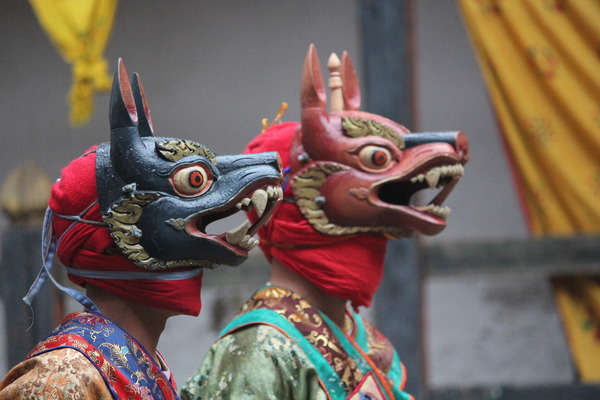
Photo Credit: Arian Zwegers
4. Atsaras: are jesters dressed in red wooden masks with a hawkish nose and a permanent naughty grin representing the mix of sacred and profane. They can be witty, eccentric, and even bothersome, but without them, a Tshechu would be incomplete. These clown figures explain the meaning of mask dances to spectators, entertain the crowd, and bring life to the festival with their witty behaviours and exaggerated movements. Nowadays atsaras have also taken up the responsibility of educating the masses on contemporary issues, as sign of the evolving role of the festival.
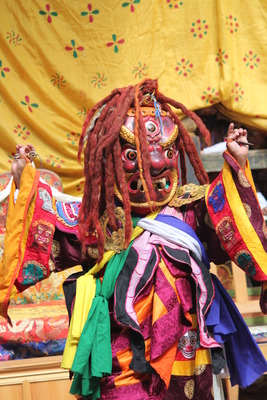
Photo Credit: Arian Zwegers
5. The Unfurling of Thangka: Any Tshechu festival concludes with the unfurling of the Thongdrol, a huge scroll painting, down the side of a Dzong (fortress). This takes place in the early hours of the morning and devotees come together to receive blessings. The painting is rolled up and kept in the Dzong to be displayed again one year later.
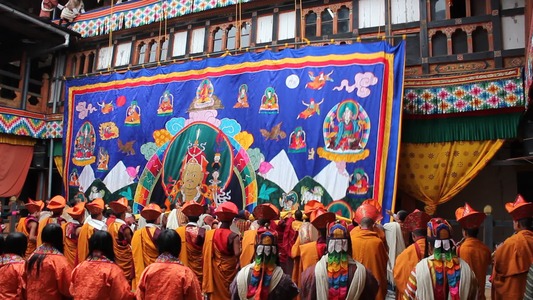
Photo Credit: Arian Zwegers
Join our President's Tour this fall
Join our President's Tour this fall
Bhutan & the Thimphu Festival | October 3 - 16, 2019
Click here to learn more and request a detailed itinerary.
Click here to learn more and request a detailed itinerary.


